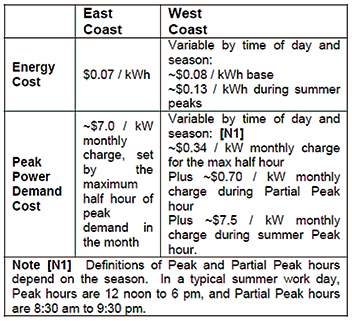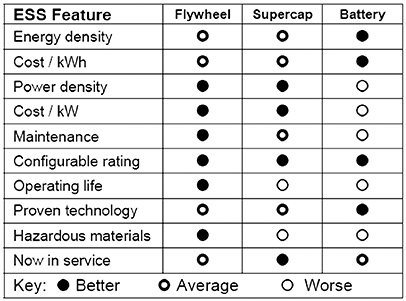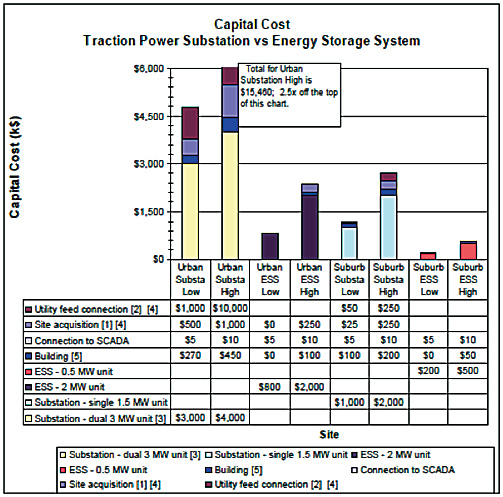Over the last century, epic advances have been made in our transportation technologies. From cars and buses to trains and planes, we have the freedom to travel at comfortable fares; however, not only are we still using primitive and environmentally harmful fuels and chemistries to propel our mass transit services, we are taxing the electric grid to do so.
Growing transportation problems, including gasoline prices and carbon dioxide emissions, are forcing city governments to consider implementing better transportation and energy initiatives in an effort to reduce the impact on our environment and taxes. As we know, constructing power plants and laying lines is expensive and time-consuming: according to a 2009 report by the Union of Concerned Scientists, between 2002 and 2008, cost estimates for a new nuclear plant rose from between US$2 billion and US$4 billion per unit to US$9 billion per unit.
Research and development of renewable energy sources continues to require funding commitments from municipalities, with these investments reducing emissions and fossil fuel dependence in the long run. While these new sources offer access to clean energy and utilize existing distribution systems, they do nothing to reduce demand or improve energy usage efficiency. Conserving for the future means adopting technologies that will minimize power usage through improved efficiency and more accurate forecasting and maximize existing infrastructure.
Energy Storage System Rides the Rails
In the U.S. and around the world, electrically propelled subway rail trains and light rail vehicles (LRVs) use AC propulsion with induction traction motors and variable voltage, variable frequency drives (VFD). Benefits of these electric trains over older DC drive trains include higher efficiency, reduced starting energy use, regenerated braking energy, lower maintenance, and a broadened range of operating conditions. Transit operators, however, have found that without an Energy Storage System (ESS) available to capture the regenerated power, electric trains and earlier DC chopper trains have not fully delivered their potential economic benefits. Specifically, these new trains are unable to achieve the expected reduced demand and energy costs from regenerated energy savings.
Electric trains draw a huge amount of energy to accelerate away from the platform – the same peak demand used as 1,000 average U.S. homes. As deceleration occurs pulling into the next station, the train sheds significant amounts of energy to stop the train. Up to 90 percent of that braking energy can be recovered and used to launch the train from the station, reducing demand on the local grid. If train stations can harvest the energy of incoming trains as they brake, they can re-cycle that same energy to launch the same train, or another train, as it leaves the station. That’s the idea behind flywheels – providing clean and environmentally friendly energy storage.
For the most part, train departure schedules are managed by their power demands. Less frequent or staggered scheduled trains typically don’t put unnecessary loads on the system, i.e. a 2-times or 3-times demand in power is created when two or three trains leave a station at the same time. Add a flywheel and you have a cost-effective energy supply that can provide a boost when it is most needed, potentially allowing more trains to run simultaneously and pull out of the station more quickly.
Transit operators and local utilities have a growing interest in finding an energy storage solution to capture the full energy savings benefit of regenerative braking. Operators are under constant pressure to reduce operating costs and improve service and reliability. Station energy storage can be used to reduce overall energy usage and peak power demand charges and to mitigate voltage sag and dropout problems. Utilities are under pressure to meet growing demand for power, and a source of ‘free’ recycled power that reduces the peak demand for rail allows utilities to allocate megawatts of power for a broad range of growing users. Fortunately, a flywheel energy storage solution can address these issues while providing a ‘green’ alternative over chemical-based batteries.
Traction Power Costs
Payments to electric utilities for electric energy and peak power demand are a significant operating expense for Transit Operators. Energy and peak power costs fluctuate and trend over time in response to complex market, regulatory, commercial, and political forces. Table 1 is a snapshot of U.S. utility rates during the summer of 2004. These rates are used to calculate cost savings in the case studies below.

Table 1: Utility rates
Flywheel Energy
A flywheel system stores energy mechanically in the form of kinetic energy by spinning a mass at high speed. Electrical inputs spin the flywheel rotor and keep it spinning until called upon to release the stored energy. The amount of energy available and its duration is governed by the mass and speed of the flywheel.
In a rotating flywheel, kinetic energy is a function of the rotational speed of the flywheel and the mass moment of inertia. The mass moment of inertia relates to the mass and diameter of the flywheel. The kinetic energy of a high-speed flywheel takes advantage of the physics involved resulting in exponential amounts of stored energy for increases in the flywheel rotational speed.
There are advantages to using flywheel technology when compared to chemical batteries:
- Response – it can promptly store huge bursts of energy, and equally rapidly return them
- Efficiency – charges/discharges are made with very small losses; as an electrical storage system a flywheel can have efficiencies over 97%
- Maintenance – flywheels do not require cooling nor do they pose the chemical recycling/maintenance issues of conventional batteries
- Lifespan – flywheels have a typical lifespan of about 20 years, while a lead-acid battery needs to be replaced every three to seven years – and even sooner for high cycle applications
Flywheels have been used since the Bronze Age as a way to store kinetic energy. Many critical applications from data centers and medical imaging equipment to cranes benefit from flywheels’ instantaneous energy storage. In a data center, the rotation of the flywheel is capable of generating enough energy during a blackout to keep the center up and running while backup generators activate. For mobile shipyard cranes, flywheels are used to recycle braking energy – saving on diesel fuel and polluting emissions. The newest application of flywheel technology is energy storage and deployment for electric trains. The flywheel operates in place of a substation, delivering power to the train through the third rail.
For major urban rail lines, any energy storage system must operate at a high duty cycle during long rush hours with close headways. In practice, this means the flywheel must operate at a duty cycle above 40 percent. In other words, it must discharge 15 seconds, idle for 20 seconds, charge for 15 seconds, idle for 20 seconds, and repeat the cycle continuously through extended rush hour periods. This rapid cycling capability separates flywheel technology from batteries. Flywheels are capable of millions of full charge and discharge cycles over the life of the system with no degradation in voltage, power, or storage. Flywheel technology is also considered the only green technology of the storage technologies applicable to the rail market and in the energy storage market in general.
The return on investment for flywheels as energy storage systems in rail applications is evident – they require little maintenance, are self-protecting during emergencies and are highly efficient with very low waste energy during charging, discharging and idling.
Energy Storage Technologies
Transit Operators have evaluated and tested flywheels, supercapacitors, and batteries for transit ESS application. Table 2 summarizes the advantages and obstacles for each. Flywheel demonstration projects in the transit industry include New York City Transit, London Underground, Paris, Lyon, and others. Both wayside and railcar demonstration projects are under way. The highest rated unit demonstrated to date is a 1 MW, 7kWh flywheel energy storage system, and larger units are now under development. Supercapacitor projects are under way in Portland OR (U.S.), The German cities of Koln and Dresden, and in Madrid, Spain.

Table 2: Energy storage comparison
Putting Flywheels to the Test
Recently, the Los Angeles County Metropolitan Transportation Authority (Metro) awarded a US$3.6 million contract to install a Wayside Energy Storage Substation (WESS) at the L.A. Metro Red Line Westlake / MacArthur Park Station utilizing flywheel technology developed by VYCON. The new WESS system will demonstrate how it can lower the cost of peak power demands, reduce energy consumption, decrease wasted energy and lower power demands to the utility during critical peak power usage.
According to L.A. Metro’s project manager, Frank Castro, “Metro is committed to an extensive energy savings and sustainability program. In the last five years, two megawatts of photovoltaic energy-saving equipment has been already installed. The WESS Project alone, with its two megawatts of flywheel energy recycling power capacity, will double this number.”
Potentially, the benefits of the new WESS system could include the elimination of train slowdowns and stop/starts by correcting low voltage occurrences, an increase in system reliability through greater power capacity, as well as a redundancy in power source for adjacent substation outage or emergencies.
Another advantage to the VYCON system is that it does not use onboard flywheels. Instead, the flywheels are used to store energy trackside at each station, meaning there are fewer limitations on size, and the weight of the device does not have to be transported.
At the Westlake and MacArthur Station on the LACTMA rail line, the flywheels will store 2MW and fit into the existing electricity substation. The power storage unit consists of four modules, each containing a high-speed steel flywheel and a motor/generator. Each module is approximately 0.9 m by 1.2 m (3ft by 4ft).
And other transportation hubs are looking to follow suit. The future is where flywheels are not only installed in existing public transport systems, but designed into them from the start. One of the key advantages being that new systems can alternate between the placement of a substation and flywheel storage to reduce overall infrastructure cost, as there is no need to drop power lines every mile.
Solving Voltage Sags
Voltage sags result from physical limitations of the traction power supply including substation location, rating, and loads. In some transit systems, the substations are placed farther apart than optimal, due to civil structures or natural barriers such as tunnels, or economic barriers, such as the cost of urban real estate. Voltage sags can worsen when new higher power demand trains, increased service, reduced headway, or extended operations overburden existing traction power supplies; for example, higher density service, a line extension, or a new fleet of higher performance electric trains.
A suitably located energy storage system can supply current near the train when it is needed, decreasing the voltage drop so that operations are not disrupted. To assess voltage support costs and benefits, figure 1 shows a range of cost estimates to install a new substation to resolve a low voltage condition, for both urban and suburban locations. Figure 3 also shows the range of capital costs for an ESS installation which provides the equivalent level of voltage support.

Figure 3: Traction Power Substation vs. Energy Storage System
Looking Ahead
Transit agencies are faced with constrained capital resources, rising energy costs, environmental commitments, and the challenge of meeting increasing ridership and maintaining system performance at the same time. Flywheel technology is ideally suited for electrified rail and subway systems, offering green, cost effective energy storage and recycling solutions. Not only can braking energy be captured and stored, but flywheel systems can also provide voltage support supplementing existing rail traction power substations. Metro transit agencies can benefit with improved performance, lower capital costs, and reduced energy usage.
Passengers may not understand the technology, but the effects – in terms of trains running more frequently, quickly, and smoothly – will be seen. Utilities and transit operators will notice reduced peak usage, lower costs, and seamless operations.
About the Author
 Patrick T. McMullen is the Chief Technical Officer for VYCON. He has a BS, Mechanical Engineering, from the University of Notre Dame and holds an MBA from the University of Southern California. Patrick was a co-founder of Calnetix and has worked full time at VYCON since mid-2003. He has over 20 years of experience in the magnetic devices field for high speed equipment, with 14 years of experience in the magnetic bearing field. McMullen developed the original flywheel system concept while at Calnetix, where he served as vice president.
Patrick T. McMullen is the Chief Technical Officer for VYCON. He has a BS, Mechanical Engineering, from the University of Notre Dame and holds an MBA from the University of Southern California. Patrick was a co-founder of Calnetix and has worked full time at VYCON since mid-2003. He has over 20 years of experience in the magnetic devices field for high speed equipment, with 14 years of experience in the magnetic bearing field. McMullen developed the original flywheel system concept while at Calnetix, where he served as vice president.







